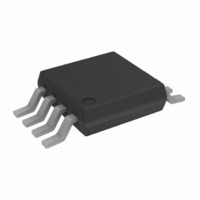AD8310ARMZ Analog Devices Inc, AD8310ARMZ Datasheet - Page 14

AD8310ARMZ
Manufacturer Part Number
AD8310ARMZ
Description
IC LOGARITHMIC AMP 95DB 8-MSOP
Manufacturer
Analog Devices Inc
Type
Logarithmic Amplifierr
Datasheet
1.AD8310ARMZ.pdf
(24 pages)
Specifications of AD8310ARMZ
Applications
Receiver Signal Strength Indication (RSSI)
Mounting Type
Surface Mount
Package / Case
8-MSOP, Micro8™, 8-uMAX, 8-uSOP,
No. Of Amplifiers
7
Dynamic Range, Decades
5
Scale Factor V / Decade
0.48
Response Time
20ns
Supply Voltage Range
2.7V To 5.5V
Supply Current
8mA
Input Offset Voltage
1.5mV
Lead Free Status / RoHS Status
Lead free / RoHS Compliant
Available stocks
Company
Part Number
Manufacturer
Quantity
Price
Part Number:
AD8310ARMZ
Manufacturer:
ADI/亚德诺
Quantity:
20 000
Part Number:
AD8310ARMZ-REEL
Manufacturer:
ADI/亚德诺
Quantity:
20 000
Company:
Part Number:
AD8310ARMZ-REEL7
Manufacturer:
MICRON
Quantity:
543
AD8310
USING THE AD8310
The AD8310 has very high gain and bandwidth. Consequently,
it is susceptible to all signals that appear at the input terminals
within a very broad frequency range. Without the benefit of
filtering, these are indistinguishable from the desired signal and
have the effect of raising the apparent noise floor (that is,
lowering the useful dynamic range). For example, while the
signal of interest has an IF of 50 MHz, any of the following can
easily be larger than the IF signal at the lower extremities of its
dynamic range: a few hundred mV of 60 Hz hum picked up due
to poor grounding techniques, spurious coupling from a digital
clock source on the same PC board, local radio stations, and so
on. Careful shielding and supply decoupling is, therefore,
essential. A ground plane should be used to provide a low
impedance connection to the common pin COMM, for the
decoupling capacitor(s) used at VPOS, and for the output
ground.
BASIC CONNECTIONS
Figure 27 shows the connections needed for most applications.
A supply voltage between 2.7 V and 5.5 V is applied to VPOS
and is decoupled using a 0.01 μF capacitor close to the pin.
Optionally, a small series resistor can be placed in the power
line to give additional filtering of power-supply noise. The
ENBL input, which has a threshold of approximately 1.3 V
(see Figure 15), should be tied to VPOS when this feature is not
needed.
While the AD8310’s input can be driven differentially, the input
signal is, in general, single-ended. C1 is tied to ground, and the
input signal is coupled in through C2. Capacitor C1 and
Capacitor C2 should have the same value to minimize start-up
transients when the enable feature is used; otherwise, their
values need not be equal.
The 52.3 Ω resistor combines with the 1.1 kΩ input impedance
of the AD8310 to yield a simple broadband 50 Ω input match.
An input matching network can also be used (see the Input
Matching section).
SIGNAL
INPUT
52.3Ω
0.01μF
0.01μF
C1
C2
NC = NO CONNECT
INLO COMM OFLT VOUT
INHI ENBL BFIN VPOS
Figure 27. Basic Connections
1
8
AD8310
7
2
NC
NC
6
3
5
4
OPTIONAL
4.7Ω
C4
0.01μF
V
(2.7V–5.5V)
V
S
OUT
(RSSI)
Rev. F | Page 14 of 24
The coupling time constant, 50 × C
with a 3 dB attenuation at f
C2 = C
as possible to minimize the coupling of unwanted low frequency
signals. In low frequency applications, a simple RC network
forming a low-pass filter should be added at the input for similar
reasons. This should generally be placed at the generator side of
the coupling capacitors, thereby lowering the required capacitance
value for a given high-pass corner frequency.
For applications in which the ground plane might not be an equi-
potential (possibly due to noise in the ground plane), the low
input of an unbalanced source should generally be ac-coupled
through a separate connection of the low associated with the
source. Furthermore, it is good practice in such situations to
break the ground loop by inserting a small resistance to ground
in the low side of the input connector (see Figure 28).
GENERATOR
Figure 29 shows the output vs. the input level for sine inputs at
10 MHz, 50 MHz, and 100 MHz. Figure 30 shows the logarith-
mic conformance under the same conditions.
Figure 28. Connections for Isolation of Source Ground from Device Ground
COMMON
SIGNAL
Figure 29. Output vs. Input Level at 10 MHz, 50 MHz, and 100 MHz
INPUT
3.0
2.5
2.0
1.5
1.0
0.5
C
–120
0
INTERCEPT
. In high frequency applications, f
(–87dBm)
4.7Ω
–100
0.01μF
52.3Ω
0.01μF
C2
C1
BOARD-LEVEL
GROUND
–80
INLO COMM OFLT VOUT
INHI ENBL BFIN VPOS
INPUT LEVEL (dBV)
8
1
HP
–60
= 1/(π × 50 × C
AD8310
7
2
C
/2, forms a high-pass corner
NC
NC
–40
6
3
NC = NO CONNECT
5
4
HP
–20
OPTIONAL
10MHz
should be as large
4.7Ω
C
), where C1 =
(+13dBm)
C4
0.01μF
0
100MHz
50MHz
(2.7V–5.5V)
V
V
S
OUT
20
(RSSI)













